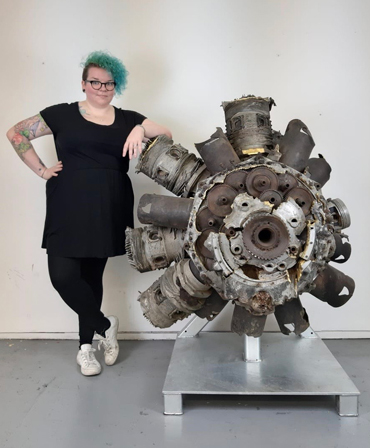In July 2019 Artist Loz Atkinson, accompanied by Italian Aeronautical Archeologist Francesco Sabini and Photographer Zoe Childerley climbed Monte Zatta in Northern Italy to explore the crash site of her Great Grandfather’s Halifax MkII JP237 Bomber, where he and the entire crew perished on 24th June 1944. A new exhibition, Finding the Fallen VE75' which opened at New Walk Museum & Art Gallery Leicester on 17 August 2020 tells the story of Artist Loz Atkinson’s Great Grandfather Arthur Pinder.
Coinciding with the 75th anniversary of the end of WW2, the exhibition explores the universal need to connect with our personal heritage. Discovering how objects turn into relics and hold powerful memories, Loz shows how with time these objects can convey new meaning despite being made from the debris of the past. Artworks on show include recovered WW2 Halifax aircraft parts such as a Bristol Hercules engine reworked into sculpture. Also on display are artworks created directly into the landscape of the mountain and wreckage collected from the crash site.
The exhibition supported by Arts Council England, combines contemporary art and history to explore ideas of sacrifice and remembrance. It recounts the story of Arthur and his duties during the War as a member of Special Operation Executive 148 squadron in the RAF.
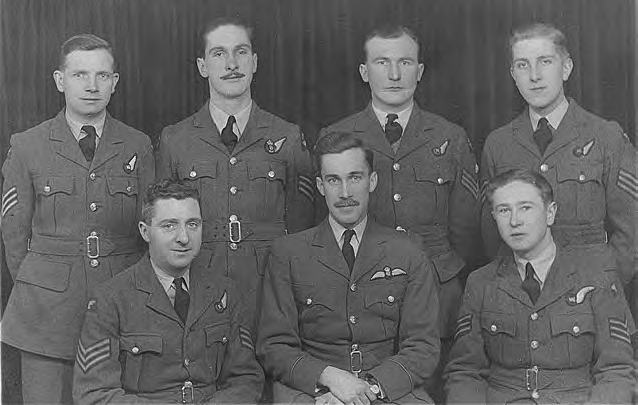
Full Halifax JP237 crew list; Pilot: Fl/Lt. Donald Ernest Hillman; Pilot/Nav: P/O. Nicholas Holyk; Flt/Engr: Sgt. Arthur Pinder (front row bottom left); Air/Gnr: Sgt. Dixon Finlayson; Air/Gnr: Sgt. John Michael Sumner; Air/Bmr: Sgt. James Ross Robertson; W/Op/Air/Gnr: Sgt. Edward Geoffrey Chapman
Loz says, “This project has been hugely personal, but I hope will inspire people to delve into their own heritage to discover incredible stories within their own past or set out on their own adventure to inspire future generations.”
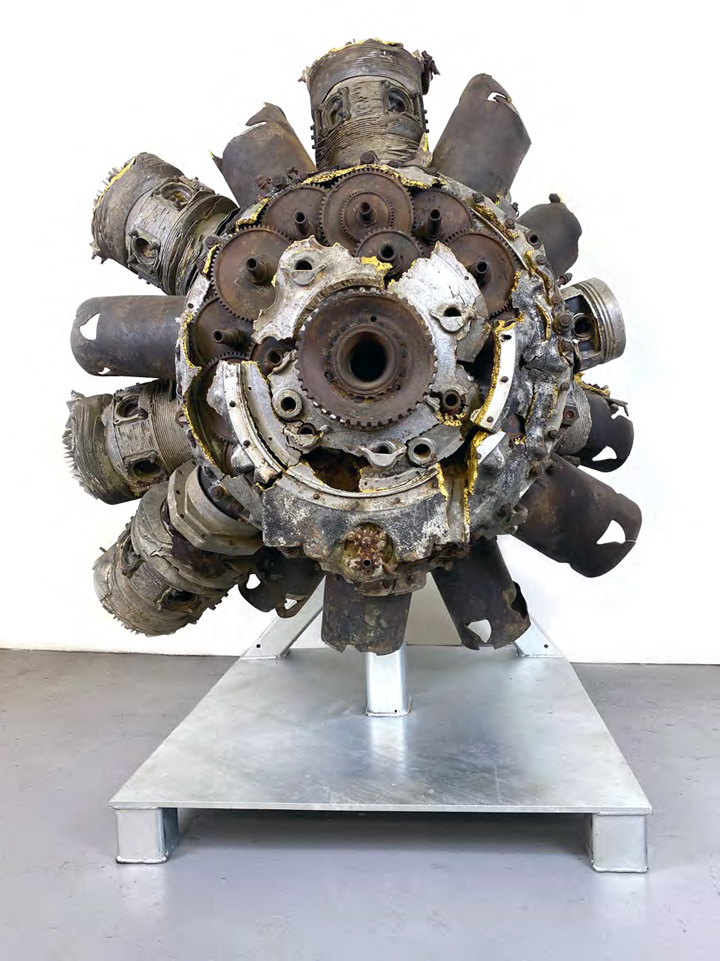
Loz Atkinson 2019 - 2020 Crashed Bristol Hercules XVI Halifax engine, Yorkshire mud, 24ct gold leaf on bespoke steel base
This engine once powered a Halifax Bomber aircraft, the same type of plane that artist Loz Atkinson’s Great Grandfather flew in during World War II. Loz has adopted techniques from the Japanese practice of Kintsugi, which is a method of repairing pottery with precious metals, showing the breakage and repair as part of the history of an object. In that same vein Loz has used gold leaf to highlight the engine’s violent past and inner workings simultaneously.
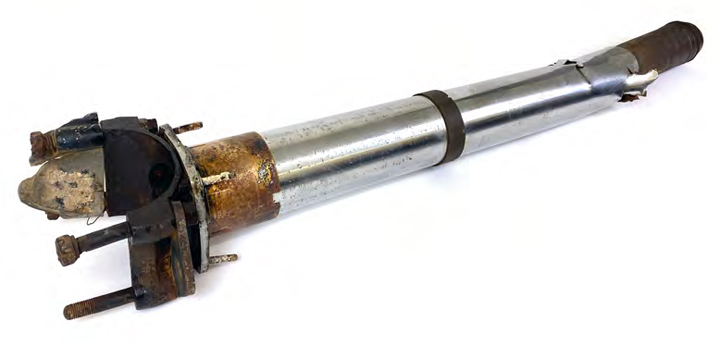
Loz Atkinson, Record of Service 2020 Embossed text, 24ct gold leaf 1944 Halifax Bomber landing gear strut.
This section of landing gear came from a Halifax Bomber that crashed just outside York in 1944; fortunately, all the crew survived. Sadly, that was not the case for Arthur Pinder who, coincidently, came from York. This large piece of landing gear would have originally helped to hold up the 24,675 kg aircraft. It is now inscribed with text from Sergeant Arthur Pinder’s RAF service record.
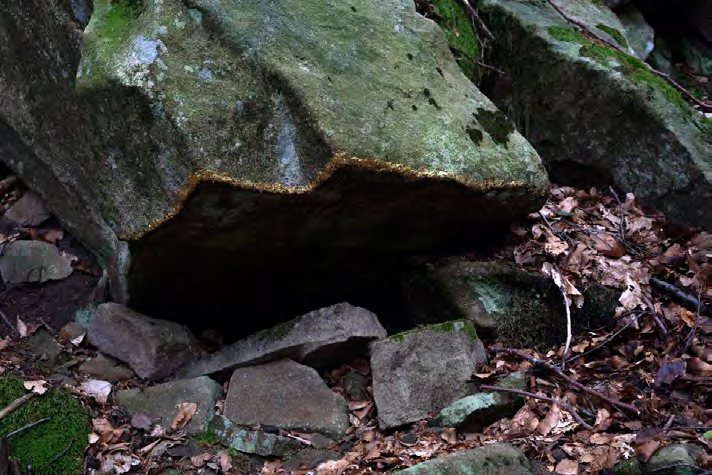
Loz Atkinson, Reliquary 2019 24ct Gold, Mountain Bedrock. Photograph courtesy of Zoe Childerley
In Christian tradition a reliquary is a highly ornate container for the relics of saints. Loz has perpetuated this tradition by applying 24ct gold leaf to a fragment of Monte Zatta’s bedrock, to turn entire mountain into a vessel that holds the aircraft relics - the symbols of the aircraft crew’s ultimate sacrifice.
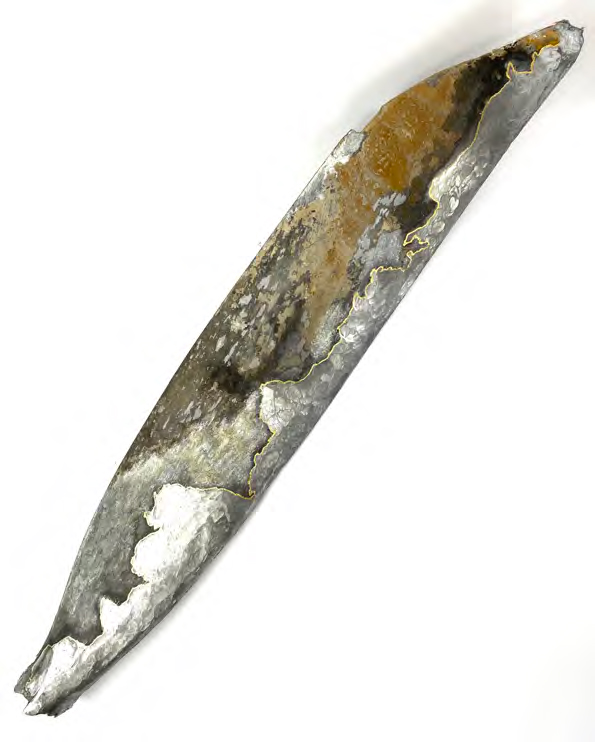
Loz Atkinson, 'Traces of a Pilgrim', 2020 1944 Halifax Bomber propeller, Yorkshire mud, corrosion GPS data, engraving and 24ct gold leaf
This propeller still shows residues of mud from the field in York where it was found. It reflects map referencing and topography through various sections made up of different textures. As well as additional metal working by the artist, these textured areas were created by natural corrosion of the object being buried underground for over 60 years. An engraved 24ct gold line links these areas and represents the artist’s GPS data collected whilst exploring Monte Zatta.
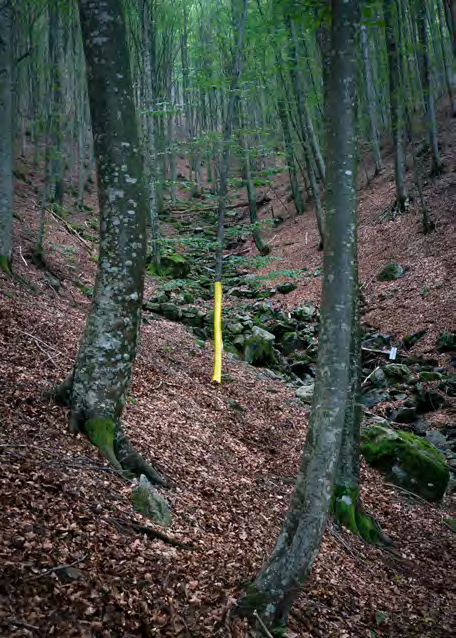
Loz Atkinson, 'Yellow ribbon', 2019, 50m Yellow Ribbon, Beech Tree,Mountainside.
Photograph: courtesy of Zoe Childerley.
Yellow ribbon is traditionally used as a symbol of hope and remembrance, but for Arthur and the rest of his crew, hope for the safe return of loved ones could not be realised. This simple yet powerful artwork created directly on the Monte Zatta crash site evokes remembrance of the important sacrifice made by each individual crewman.
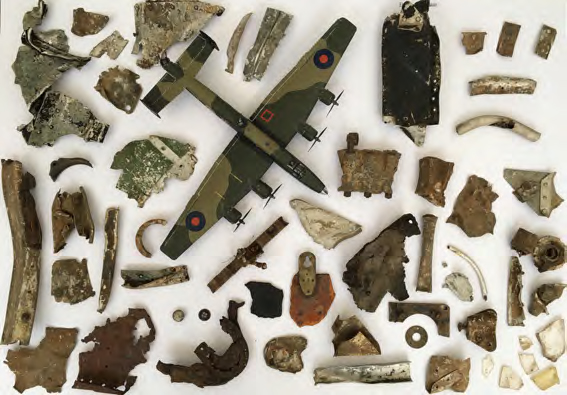
Fragment from the Mountain. 2019. Collected from Monte Zatta,
Only small fragments of the aircraft wreckage now remain on the crash site. These gnarled and twisted metal objects capture the violence of a truly devastating event.
“The work is made more poignant as it is being shown in what continues to be a politically turbulent time across the globe," says Loz. "It raises issues about how we commemorate the sacrifices of individuals without glorifying war - highlighting if we don’t learn from history, we are doomed to repeat it."
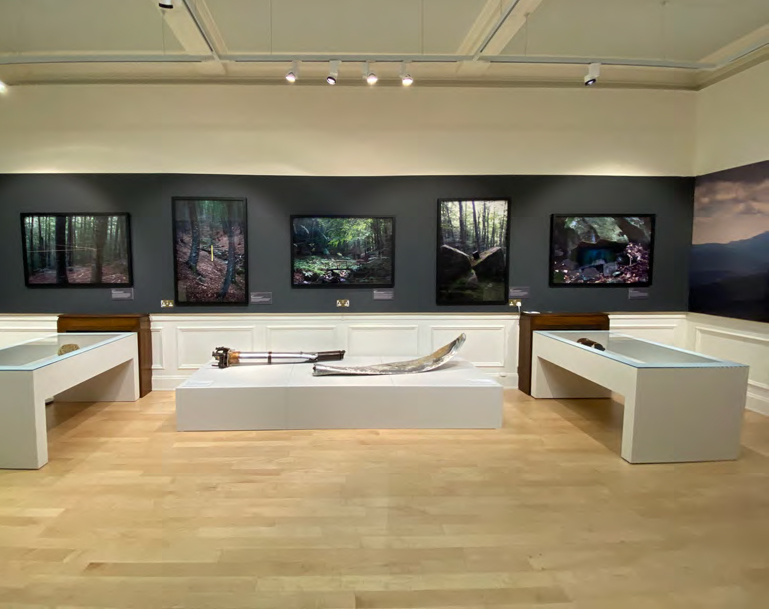
'Finding the Fallen', exhibition at New Walk Museum & Art Gallery Leicester
.”Finding The Fallen - A Pilgrims Journey Of Remembrance" opens to the public on the 17th August and runs until the 15th November at Leicester Museum and Art Gallery. Entry is free. Booking is essential.
Useful links
www.leicestermuseums.org/ve75findingthefallen
Photographs courtesy of Loz Atkinson or Zoe Childerley
This area of our website is a blog - please scroll below to view comments or questions. Feel free to use the contact form too.
